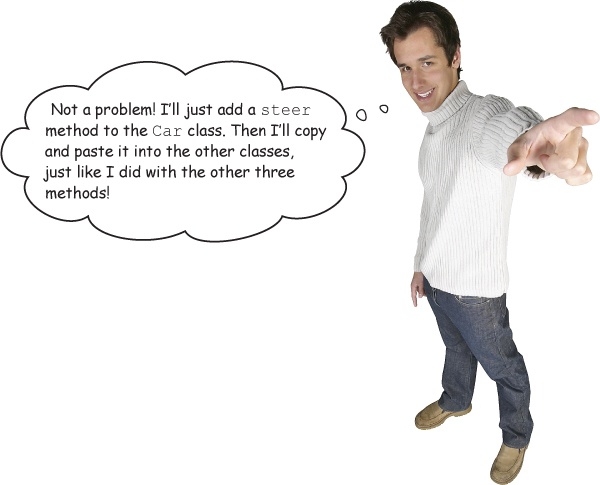Chapter 3. Inheritance: Relying on Your Parents

So much repetition! Your new classes representing the different types of vehicles and animals are awesome, itâs true. But youâre having to copy instance methods from class to class. And the copies are starting to fall out of syncâsome are fine, while others have bugs. Werenât classes supposed to make code easier to maintain?
In this chapter, weâll learn how to use inheritance to let your classes share methods. Fewer copies means fewer maintenance headaches!
Copy, paste... Such a waste...
Back at Got-A-Motor, Inc., the development team wants to try this âobject-oriented programmingâ thing out for themselves. Theyâve converted their old virtual test-drive app to use classes for each vehicle type. They have classes representing cars, trucks, and motorcycles.
Hereâs what their class structure looks like right now:

Thanks to customer demand, management has asked that steering be added to all vehicle types. Mike, Got-A-Motorâs rookie developer, thinks he has this requirement covered.

Mikeâs code for the virtual test-drive classes
But Marcy, the teamâs experienced object-oriented developer, has some reservations about this approach. ...
Get Head First Ruby now with the O’Reilly learning platform.
O’Reilly members experience books, live events, courses curated by job role, and more from O’Reilly and nearly 200 top publishers.

